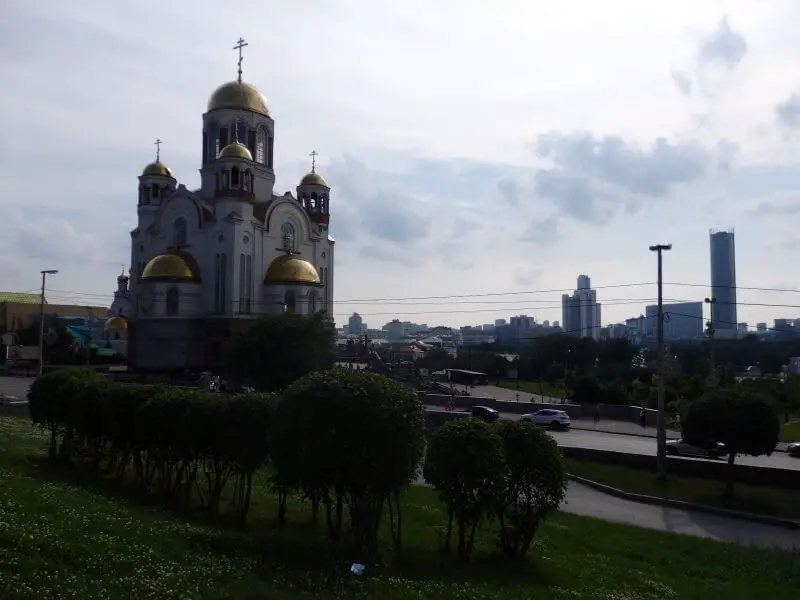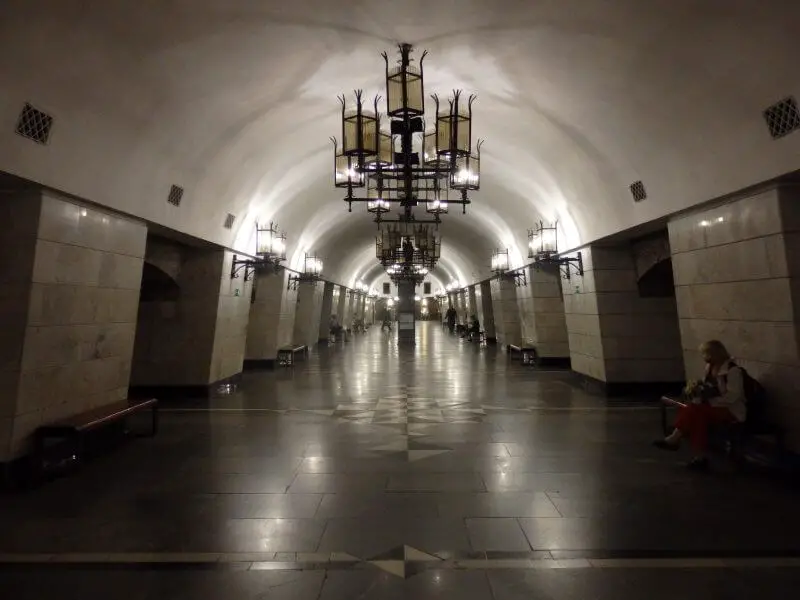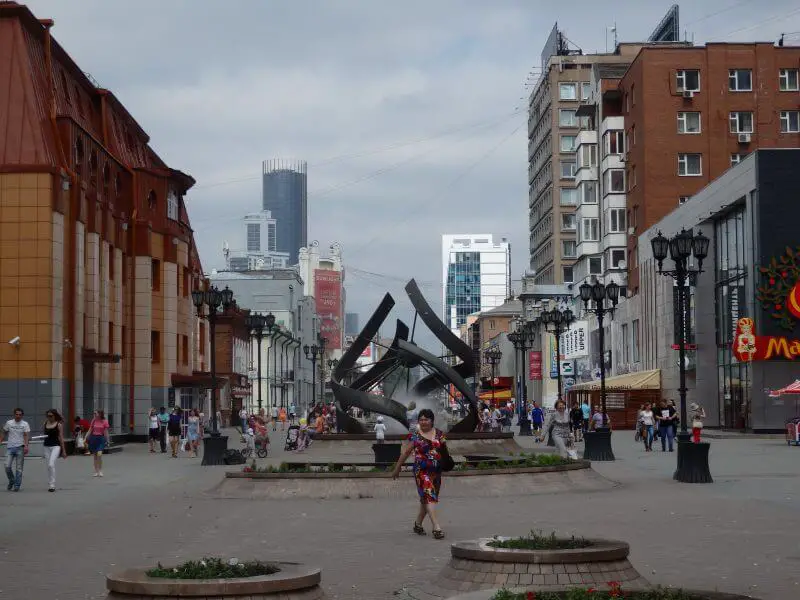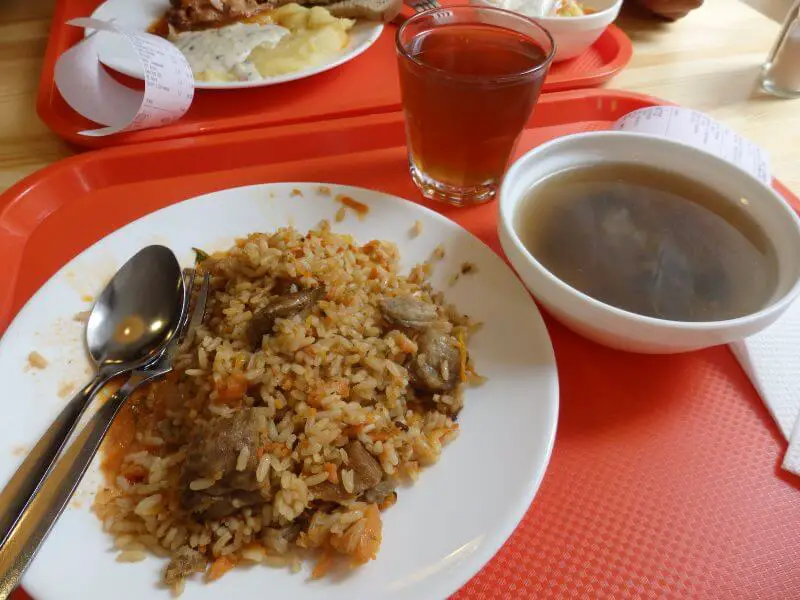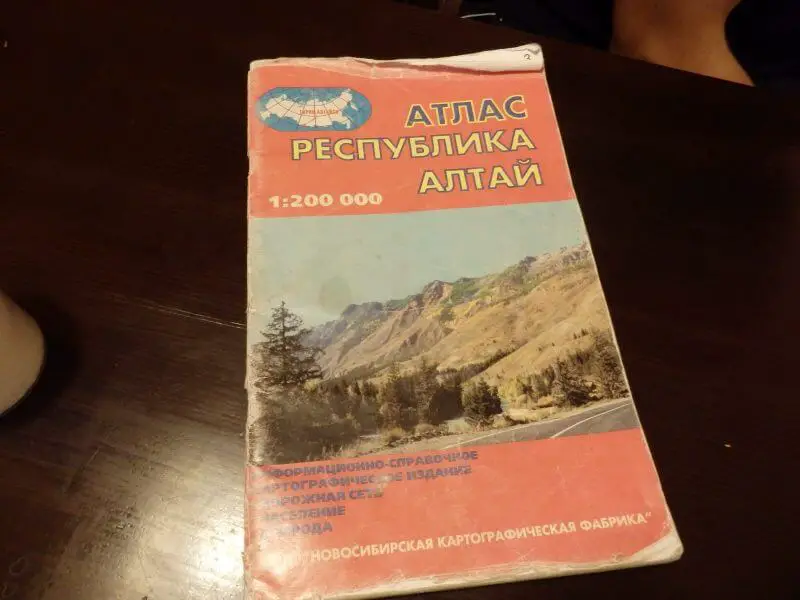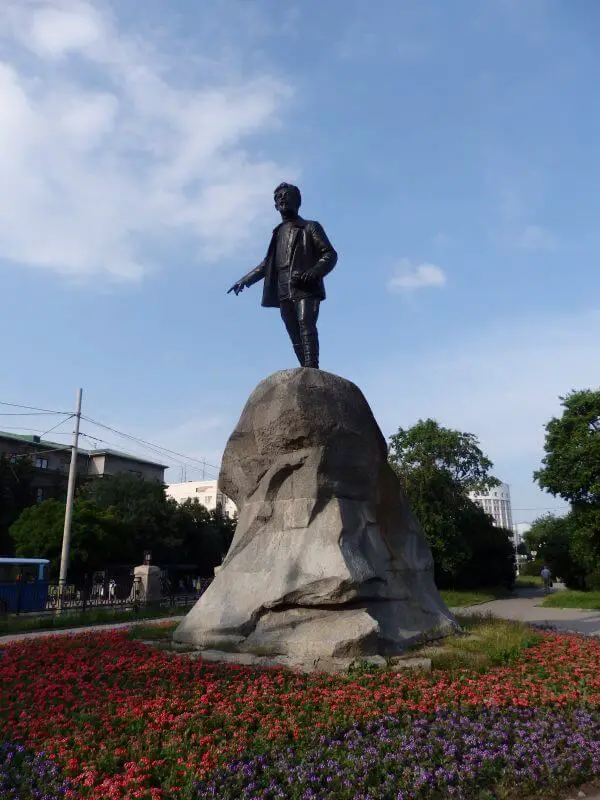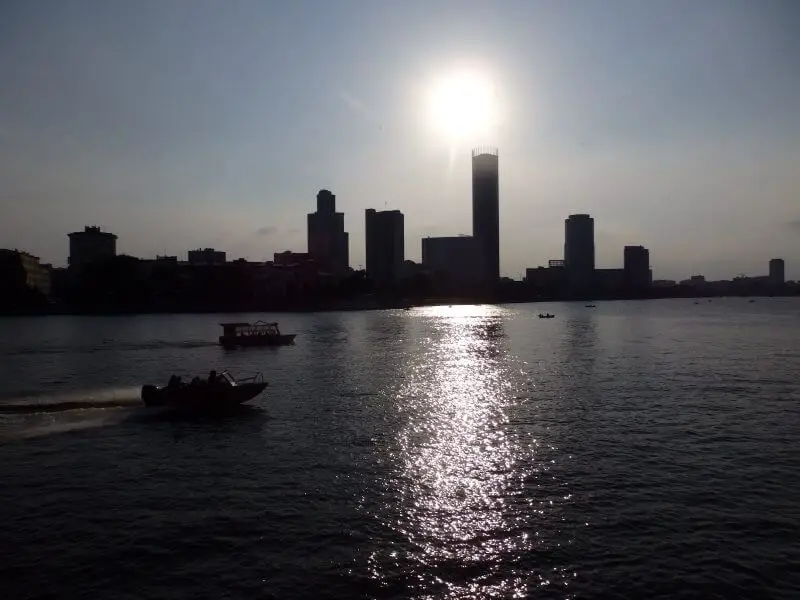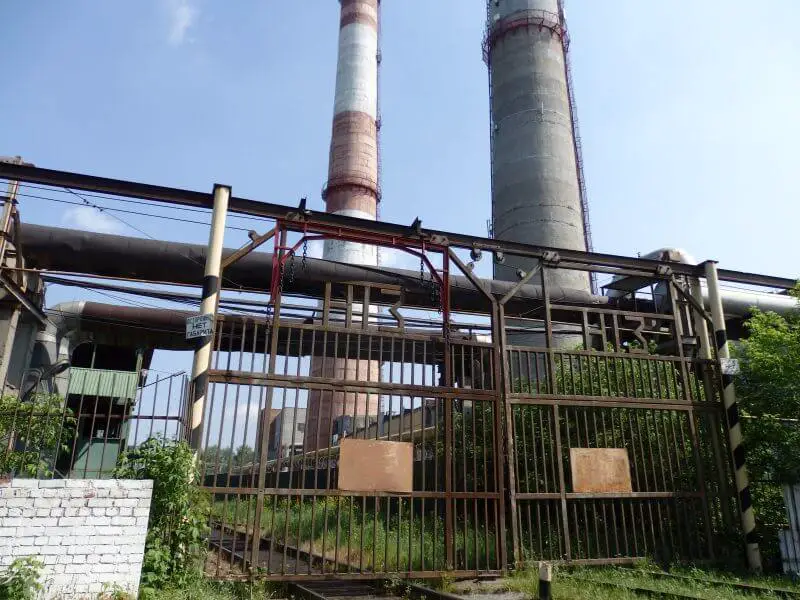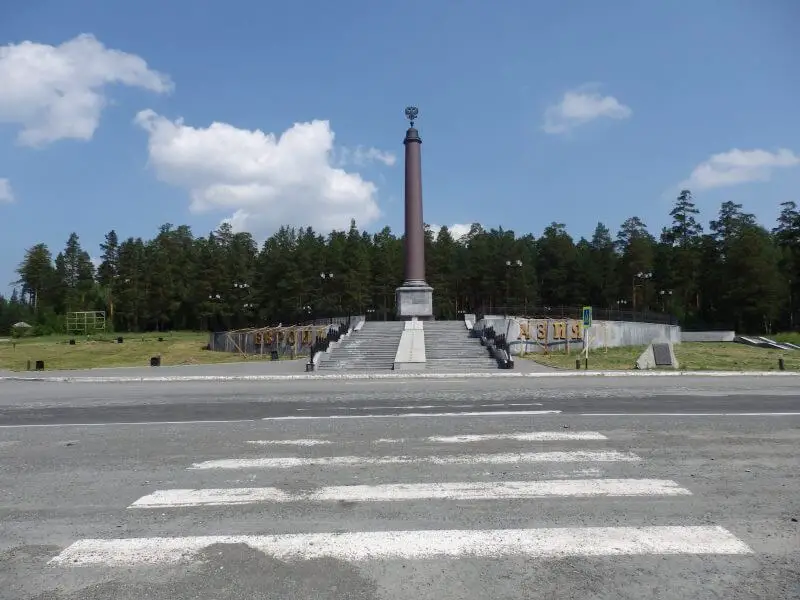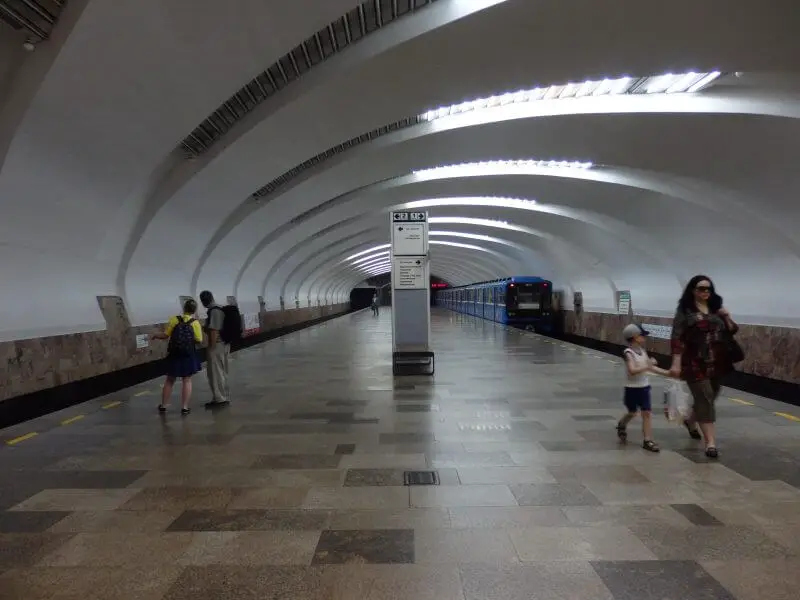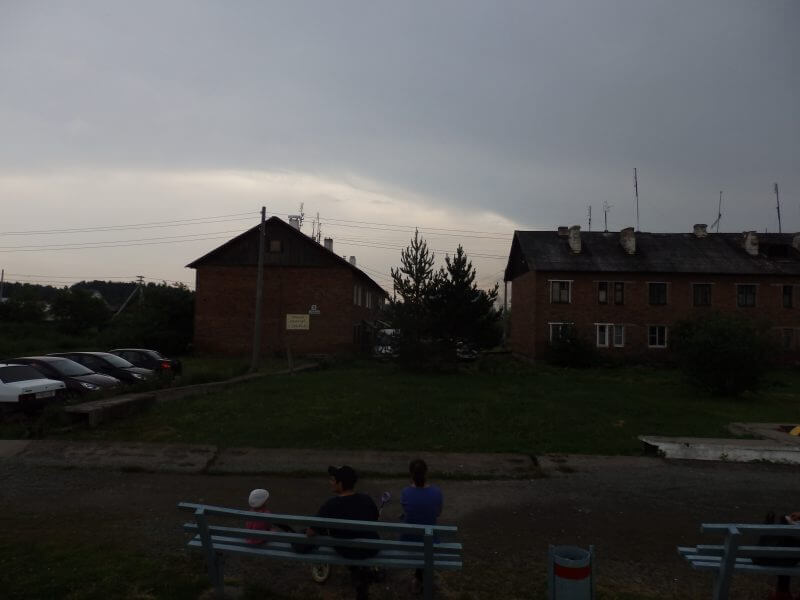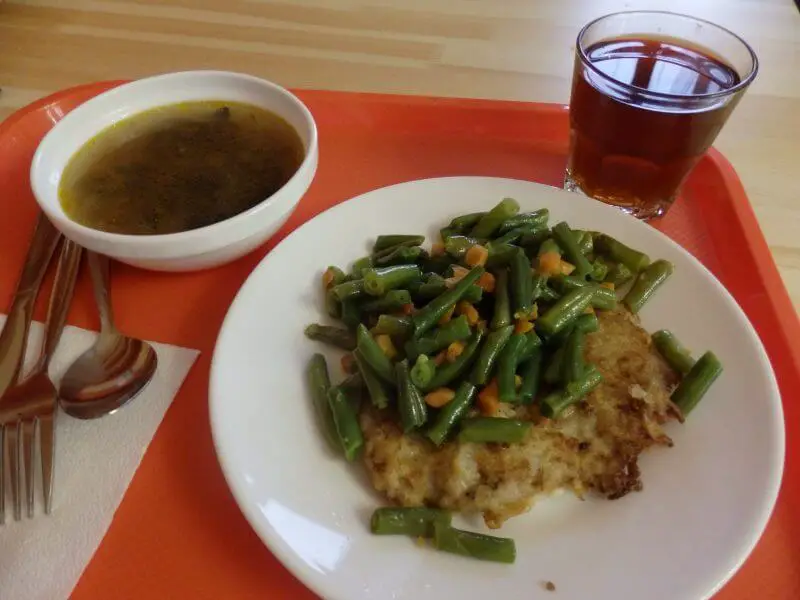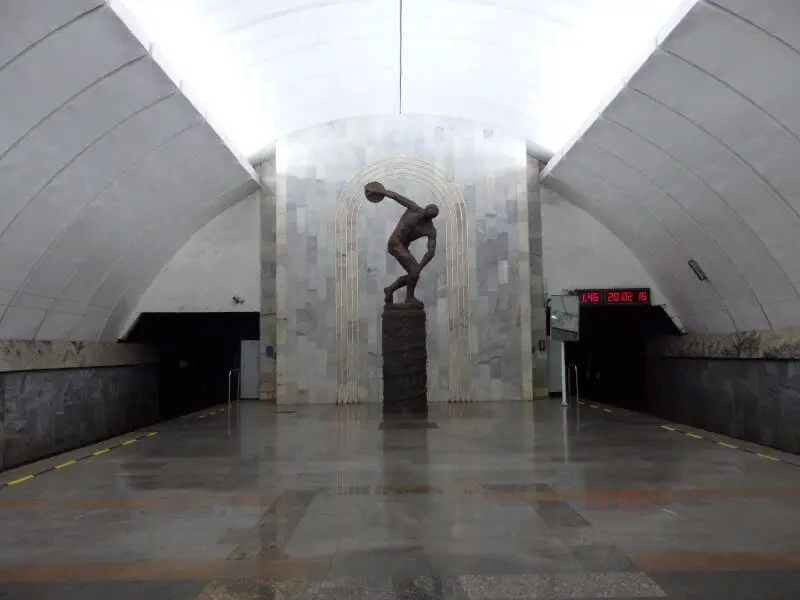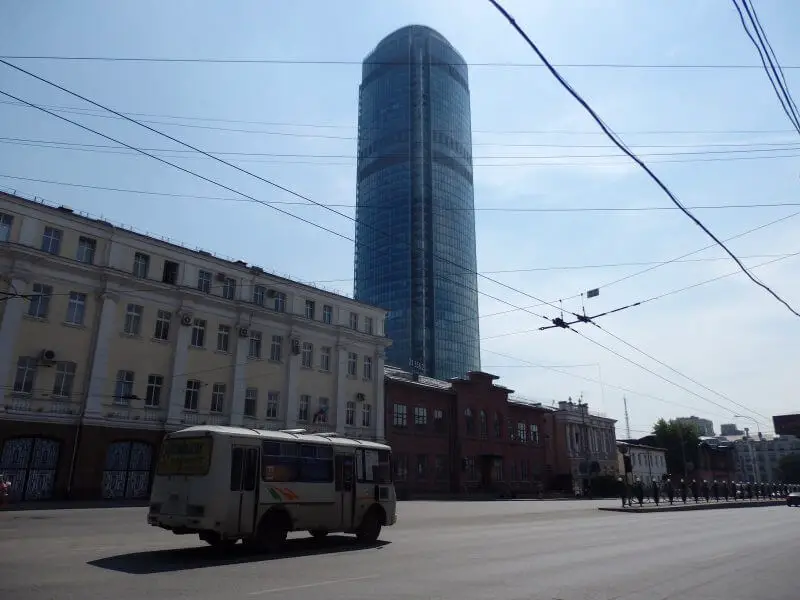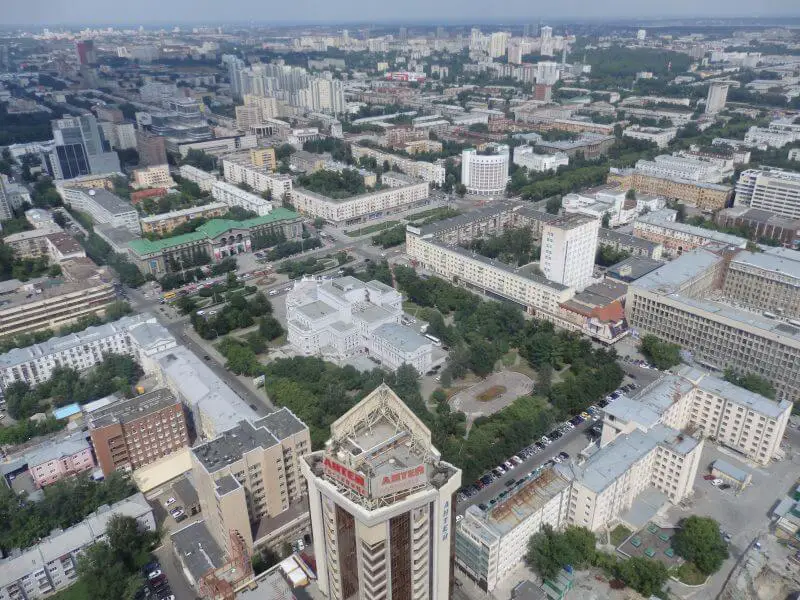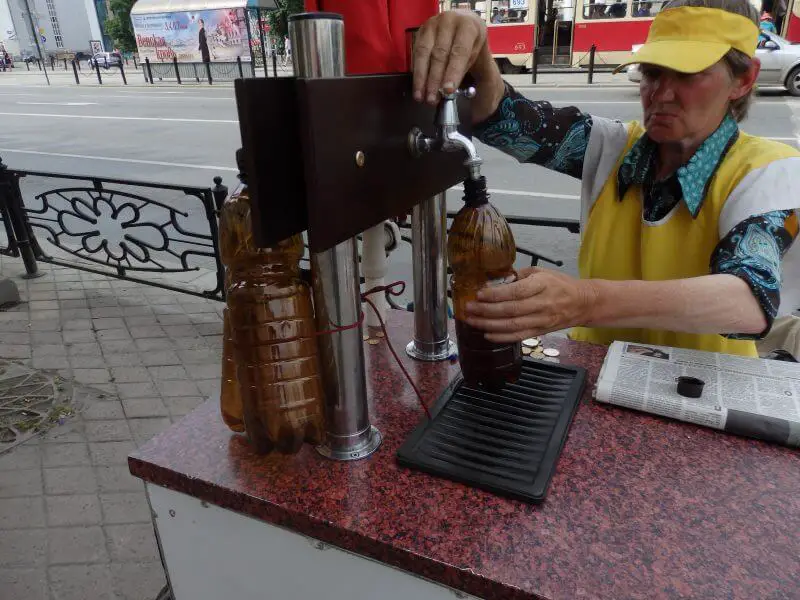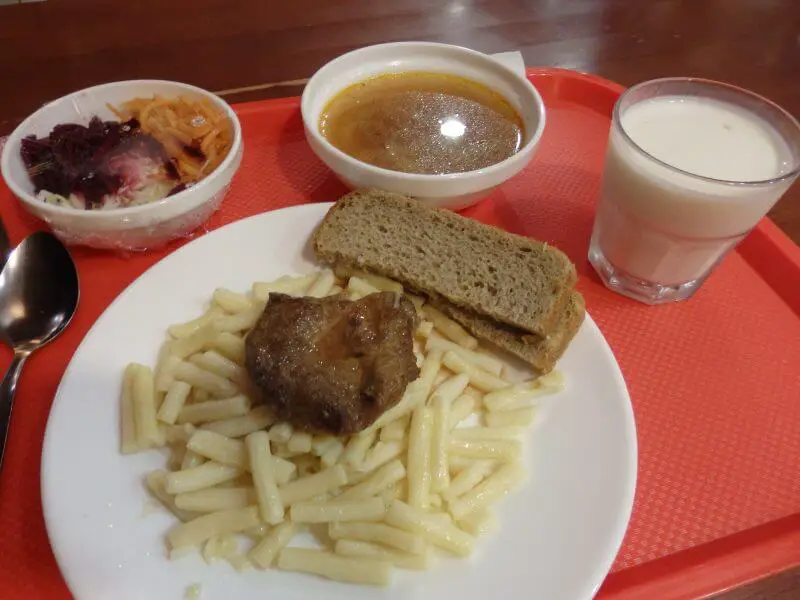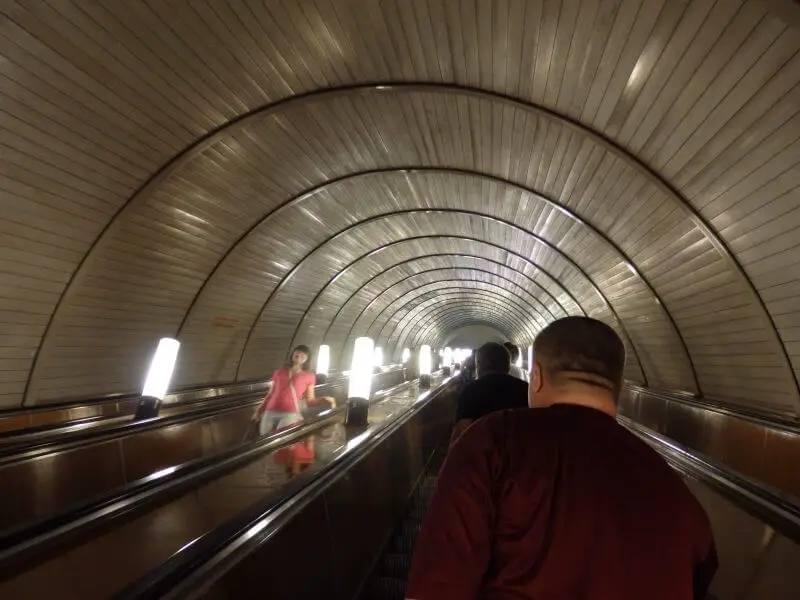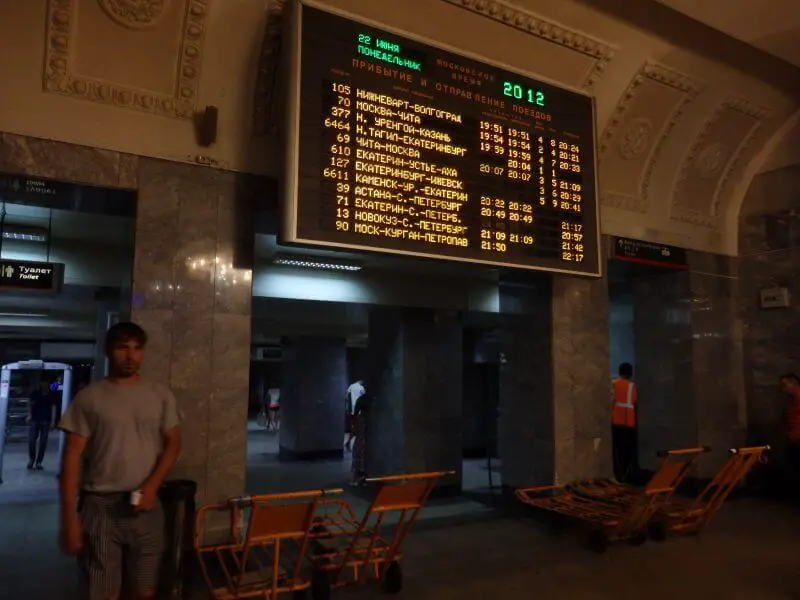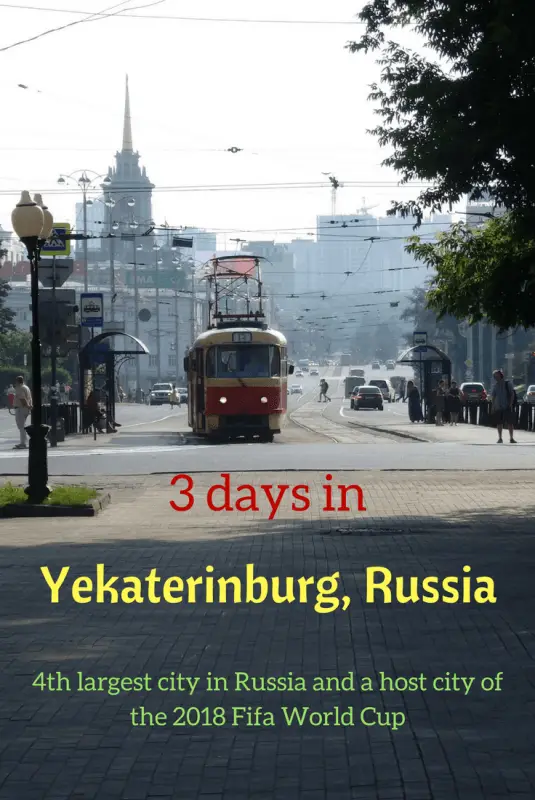I made a stop midway of my Trans-Siberian adventure at Yekaterinburg, a vibrant yet unassuming city with a colourful past (probably a little dark). It was 3 days well spent immersing in the confluence of influences at the city straddling Asia and Europe.
Yekaterinburg (alternatively, Ekaterinburg), city of contrasts/ contradictions, where Asia meets Europe, classical meets modern architecture, communist symbols meet capitalist ones, and industrial icons meeting historical ones. With a vibrant mix of cultures, architectural styles and industries, the city may seem enigmatic to the curious onlooker, who upon deeper venturing may accidentally be stuck spellbound. Formerly Sverdlovsk (during the Soviet-era), it is probably most well known as where Tsar Nicholas II and his family were executed during the Russian Civil War. Today, it is the fourth most populous city in Russia.

Church on the Blood, Yekaterinburg.
I began where I left off, from the capital of Siberia, Irkutsk, to the capital of the Urals, Yekaterinburg. I arrived in Yekaterinburg late on a Friday night, after my first ever experience in a third class sleeper. Energised and excited upon reaching my second Russian city, I proceeded to the metro to head to the hostel.

Uralskaya metro station for my first metro ride in Russia. Russian metros, though a little dated, are clean, efficient, and beautifully decorated.
Hostels appear to be a little less common here in the middle of Russia, as compared to larger cities such as St Petersburg or Moscow. The ‘hostel’ i stayed in was a converted apartment in some private housing area. Nevertheless, it was clean and comfortable, and good for a short stay.
Day 1: Walking tour around Yekaterinburg/ Ekaterinburg city center
On the train to Yekaterinburg, I met a friendly local who happened to be from this city, and he offered to show me around for the day. Couldn’t have been more thankful for the offer, and it was an awesome day exploring the city on foot, while getting to know each other’s cultures and countries better.

Vaynera Street. Pedestrian street with international brands and interesting art pieces. 
Iset River Dam, in the heart of the city.
As I made my way to the place we agreed to meet, a couple of sights caught my eye. At a pedestrian street near where I stayed, people had erected a sort of memorial to Michael Jackson, which included many large posters and a life size statue of him. On hindsight (after visiting 4 cities in Russia), interest in western pop culture is quite evident in Russia, and it is not some isolated country cut off from the rest of the world that western media paints it to be.

Monument to Michael Jackson. 
Street art. 
Friends I met on the train. Amazing people I’m really glad to have met, one a Russian, the other, Australian.
Our first stop was at a popular fast food chain (in Russian canteen style), Vilka-Lozhka, for lunch. You’d take a tray at the start of the queue and pick items you’d like, and pay at the end.

Lunch (₽164 rubles) at Vilka-Lozhka. Point and pick the dishes and pay at the end of the line. Similar to the one I had in Irkutsk, where I was never sure what I was ordering.
Many faces of Yekaterinburg along Iset River
It was satisfying, first proper meal in half a week (I had mostly noodles and bread on the train and the previous night). With lunch done, we headed off to discover the interesting sights in the city, such as the buildings below, skyscrapers from distinctively different eras standing side by side. Ok, not exactly side by side, but almost. The Iset River runs through the heart of the city, and the landscaped banks of the river make them ideal for picnics or, more commonly spotted, wedding shots.

Skyscrapers from different eras. 
Along the Iset River. 
Soviet-era architecture. 
Dinamo Sports Station, and more wedding shots.
The Soviet Union produced a couple of distinctive architectural styles during the decades of their reign. I’m not educated enough to be able to name/ effectively distinguish them, but a few of these styles can be found in Yekaterinburg. Sounds like an ideal place to study the evolution of such styles, Given the distance from Europe, buildings here were spared of the heavy bombing experienced further west during the WWII.
Church on the Blood/ Church of All Saints
One of the things Yekaterinburg is noted for, is the city where the last Tsar of Russia and his family met their end. The Ipatiev House once stood on the grounds of where the church currently is. Here, the Romanovs were held captive and subsequently executed in 1918, during the Russian Civil War. The church was built in the year 2000.

Church with many names: Church on the Blood, Church of All Saints, Church on Blood in Honour of All Saints Resplendent in the Russian Land. The Ipatiev House, where the last Tsar of Russia and his family were executed, once stood on this plot. 
Cross in front of the church.

More Soviet-era buildings, of a different style this time. Something interesting about the styles, but I can’t quite put my finger on it. 
And some more.
Other adventures
We had a tea break after that. The guy who brought me around Yekaterinburg was on his was home after a hiking trip in the Altai Mountains. Like, a real hiking/camping trip complete with real maps. Not my carry-a-small-bag-looking-for-a-nice-hostel-in-the-woods kind of hike.

Serious navigation maps. 
Here’s his planned route. I remember never ever being able to follow the marked out path during navigation exercises in national service.
Park Usad’by Kharitonovykh-Rastorguyevykh

Some palace-like place near the church under renovation. 
Monument to Ural Komsomol. 
The Church of Ascension. 
Peaceful park behind the Church of Ascension. 
With many little birdhouses. 
Afghanistan War Memorial.
We covered a few more places along the way, not featured here, and it was getting slightly late in the afternoon by then, so we ended the tour and went for dinner.

Dinner (₽293 rubles) at another Vilka-Lozhka. Accidentally picked ‘little birds’ hearts’ (as explained by my Russian friend after I’ve paid. Can’t say it was the most pleasant tasting thing, but like almost everything else, it was interesting.
Prospekt Lenina
Prospekt Lenina is the main avenue through the city center, and several prominent landmarks line the avenue.

Monument to Yakov Sverdlov. Key figure among the Bolsheviks, after whom Yekaterinburg was renamed (Sverdlovsk) from 1924-1991. 
Ural State University, along Prospekt Lenina.
And with that my new friend bade farewell and skated away, refusing a picture because it’s the memories that is the most important, according to him. So I continued my tour of Yekaterinburg alone with a walk along Prospekt Lenina to the Iset River, back towards the hostel.

Down Prospekt Lenina, through the heart of the city. 
City Administration Building, similar to the grand Stalinist style architecture found in Moscow.
I’ve (almost) always enjoyed both the times with company, and the times I’m alone. Time spent with good company allows for an exchange of ideas, the creation of shared memories and emotions that can only be understood by the company you’re with. Time spent alone, on the other hand, allows for reflection, introspection, and a deeper searching within oneself, the meaning of everything, if there were a meaning at all.
Iset River
As the Iset River flows through Yekaterinburg, it meets a dam at Prospekt Lenina, which withers it down to a little stream on its journey down south.

Sunset along the Iset River. 
Iset River, after the dam. 
Buildings along the Iset River. 
Iset riverside. 
QWERTY monument. One of the quirkier sights in the city, a giant keyboard. Wikipedia has an interesting description of it. 
Some hipster area.

The incomplete Yekaterinburg TV Tower on the left, and the Yekaterinburg Circus on the right. The tower, intended to reach over 400m, stands at 220m. After fatal (and illegal) base jumping incidents, the site has been sealed off. 
Trams in Yekaterinburg.

Guess I visited a little too early. 
Around the neighbourhood, the Ural State Mining University. 
Catch the wave. 
Housing estates. 
The past, the present, and the future.
While it was still bright, it was getting late by then, and I was getting a little worn from the days on the train and the full day of walking, so I decided to call it a day. After all, there was to be a long day ahead tomorrow.
Day 2: Europe Asia Border Monument and the Ganina Yama
Spent the day visiting attractions that were a little out of town (though in different directions), the Europe-Asia Border Monument and the Ganina Yama.
The day didn’t start off too well. I did manage to find the right bus to take and managed to get tickets (not a small feat in Russia), but that did not stop me from ending up in the wrong place. Thought I had successfully told the bus driver to drop me off along the highway near Europe-Asia Monument (bus 150 from the bus station beside the railway station, ₽84 rubles), but apparently not, as he went all the way till the terminal stop at Pervouralsk, some industrial looking area.
I had to walk back probably around 5km to get to the monument. It wasn’t that bad in the end though, as it was an interesting walk, passing by places such as this huge complex complete with railway tracks running through, some rural villages and a short stretch through a forest. I was really fortunate to have gotten a data plan, to be able to find my way out, as the area was too rural to be included in offline map apps.

At Pervouralsk. 
Passed some villages. 
And some forests.
Europe-Asia Border Obelisk
Before finally arriving at the monument. Honestly, nothing too impressive about it, but pretty symbolic. There’s some history behind this spot too. A newer monument was erected closer to Yekaterinburg city for the convenience of travelers.

Finally found it. 
Cut through the woods and got the the highway. This is the marker along the highway, complete with red line on the ground to demarcate where Asia ends and Europe begins.
There’s also a marker along the highway, after cutting through the woods.
Yekaterinburg Railway Station
Having been convinced that Russia lies in both Asia and Europe, I crossed to the opposite side of the highway to flag a bus back to Yekaterinburg city, After frantically flagging at countless buses that didn’t want to stop for a lunatic in the middle of the highway, I finally got on one and got back the Yekaterinburg (₽80 rubles).

Back in the city. Here’s another interesting looking building near the bus station. 
Yekaterinburg railway station.
The grand railway station is a short walk from the bus station. Dropped by for lunch at the dependable Vilka-Lozhka. I probably wouldn’t survive anywhere else for food, without being able to just randomly point at dishes.

That’s how it’s spelled in Russian/ Cyrillic. 
Lunch. (₽136 rubles) Not too sure what as usual.

Monument in front of the railway station. The Soviets seem fond of huge and grand monuments. 
Crest on the facade of the railway station. That’s ‘Europe’ on the left. ‘Asia’ on the right, ‘Yekaterinburg’ in the middle, and the monument above it.
Journey to Ganina Yama
I did a little subway/ metro tour before making my way to Ganina Yama in the afternoon, stopping at a couple of interesting looking stations. The layout/ design of many of them reflected Yekaterinburg’s role as an industrial city.

Uralmash, near a famous heavy machinery production facility. 
Mashinostroiteley. 
Mashinostroiteley. 
The bus to Ganina Yama.
I got off the subway for the bus to Ganina Yama. Buses are a little trickier than trains in Russia, as I was to learn later that day, in the second bus related confusion of the day. The bus (₽41 rubles) was supposed to get me all the way to Ganina Yama but it stopped abruptly in the middle of nowhere and I was told that I needed to get off. A kind old lady directed me to a stop nearby to hop on another bus that eventually got me there, but I’m still not too sure what had happened. Trusting strangers work sometimes. Especially when you don’t have much of a choice.
Ganina Yama
After hanging in uncertainty for an hour or so, I arrived at the Ganina Yama, a former mine where the bodies of the last Tsar of Russia and his family were allegedly dumped after their execution at the Ipatiev House in Yekaterinburg in 1918. Now a beautiful monastery dedicated to the royal family. There was a solemn mood at the monastery. It was after an afternoon shower, with the smell of nature filling the air.

Ganina Yama. 
Intricate roofs. 
The mine pit where the bodies where allegedly dumped. 
One of the chapels in Ganina Yama. 
Tsar Nicholas II. 
Tsarina Alexandra.
Getting back to Yekaterinburg from Ganina Yama
Something in the atmosphere which made the place feel special. Nothing too exciting, but glad I made the trip. The next bus out from the monastery back to the city was rather late, and not wanting to spend a couple of hours in some deserted place not knowing if the bus will eventually come, I decided to try to find the nearby railway station (that wasn’t exactly near).

From Ganina Yama to the Shuvakish railway station. Was getting a little dark by then. 
Passed some forests and isolated roads, as I did in the morning. 
Through some isolated tunnels. 
Relieved to finally see the railway lines. 
Limited view of the Urals from the overhead bridge crossing the tracks. 
Railway station in rural Russia.
And at the Shuvakish railway station. First part of the problem, getting to the station, down. Next, getting the right tickets and finding the right train. There were some people waiting for the train too so I attempted to ask them how to get tickets. They were helpful but I didn’t quite get them. I think I understood that the train would be coming soon and that I should just get on.

Houses beside the railway station. 
Train to Yekaterinburg from Shuvakish railway station.
The train arrived not long after, and it was a short ride back to Yekaterinburg city. No one came to ask for tickets all the way and I got off in the end, feeling a little confused but glad to be back in the city.
Back in the city, dinner at where else, but Vilka-Lozhka.

Dinner at Vilka-Lozhka at the railway station (₽211 rubles). So many different dishes to pick from, I’m not sure if I was halfway through their selection even after so many visits.
Subway explorations
Had a little more energy after dinner, so I decided to check out a couple more subway / metro stations before calling it a day.

Dinamo metro station, with the sculpture reflecting the nearby sports center. 
Dinamo. 
Chkalovskaya metro station. 
Botanicheskaya metro station. The honeycomb design something to do with the botanical gardens nearby.
With that, completed my Ekaterinburg metro/ subway tour. Interesting places to visit, but they could barely compare to the splendour of the metro systems in St Petersburg and Moscow, which kept me in constant awe.
Day 3: Visotsky Business Center and random musings
Spent my last day in Yekaterinburg mailing postcards, getting a haircut, and explored the streets a little deeper. I started the day early and caught some landmarks along Prospekt Lenina.

The beautiful Sevastyanov’s House along Prospekt Lenina, beside the Isset river dam. 
Monument to Alexander Stepanovich Popov, inventor of radio.
I was planning to visit the lookout on the roof of the Visotsky Business Center upon recommendation from the friendly Yekaterinburg guy who showed me around on the first day, but it wasn’t open till a couple of hours later so I spent more time exploring the streets.

Visotsky Business Center. 
More Soviet-era buildings (I think). 
“5 more minutes. I’m stuck in traffic.”
Vysotsky Business Center
186m off the ground, at the top of Vysotsky Business Center (₽250 rubles). Tallest Russian building outside of Moscow and northernmost building above 150m worldwide (according to Wikipedia). The TV tower apparently counts as a structure, not a building. Feeling a little high.

From the Vysotsky Business Center lookout. 
Every side shows a difference face of the city. 
Picture perfect panoramas. 
The Iset River flowing through the heart of the city. 
Housing estates. 
Everything looks so small from up there.
Back down on the ground. Got a nice big bottle of Kvass (traditional fermented beverage, ₽95 rubles for a litre) for the next train trip.

Kvass at a roadside stall. 
Simple lunch (₽106 rubles).
Ploshchad 1905 Goda

Lenin at the 1905 Square (or Ploshchad 1905 Goda/ Площадь 1905 года). 
Church at Ploshchad Malysheva. 
Shuttling between the 20th and 21st century in Yekaterinburg. 
Ploshchad 1905 Goda metro station.
The final bits
I went to look for a haircut in the afternoon, and it turned out to be less straightforward than I thought. First was identifying a hairdresser. Check. Then I realised it was in a gated compound, so I had to tailgate someone in. Check. Finally, getting the hairdresser to understand that I wanted a haircut. By then I just wanted to get my hair cut and couldn’t really care how the hairdresser did it. After intense gesturing, I got a new haircut. Not quite what I envisioned, but got the job done. And ready for the next leg of my adventure.

Last meal at Yekaterinburg (₽269 rubles). 
Shopping mall near the hostel, along ulitsa Vaynera. Really convenient to get stuff at the 24 hr supermarket, though a little more upmarket. 
Long rides on metro escalators are good times to reflect on life.
I went to the supermarket near the hostel to stock up on more food for the next train ride, another one and a half days to the long anticipated St Petersburg.
Back on the Trans-Siberian
Into the time warp at the railway station. Trains on Russian railways run on Moscow time, so as I stepped into Yekaterinburg railway station, I took a step 2 hours back in time.

Inside Yekaterinburg railway station. 
10pm just outside the train station, 8pm on the inside. 
All aboard the train to St Petersburg!
All ready for the next part of my Trans-Siberian adventure, a one and a half day ride on a comfortable air-conditioned train (still in third class), before St Petersburg, possibly one of the most beautiful cities on Earth. And then Moscow, eventually.
Yekaterinburg in numbers:
Actual travel dates: 20 June 2015 – 22 June 2015
Accommodation: ₽1500 (3 nights)
Food: ₽1468
Attractions: ₽250 (Vysotsky viewing deck, the rest were free)
Transport (within Yekaterinburg, to the Europe Asia Monument, and the Ganina Yama): ₽297
Total Yekaterinburg expenses: ₽3515 (~S$87/ US$64 at June 2015 rate)
